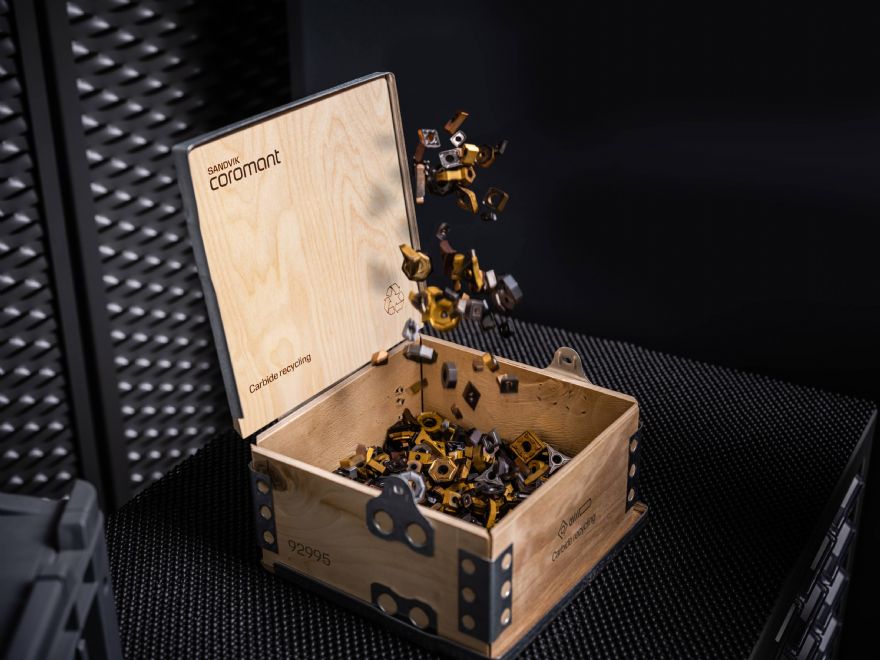
Building on the success of its existing buyback programme, the metal-cutting company
Sandvik Coromant — together with the wider Sandvik Group — has launched an upgraded tool recycling scheme that has been structured make the process of repurposing worn carbide easier for customers, and thereby help boost material circularity throughout the supply chain.
In 1997, Sandvik acquired Wolfram Bergbau und Hütten — a leading tungsten powder and tungsten carbide producer — and launched a buyback scheme to recycle carbide material through the division that is used by Sandvik Coromant to this day; and since then, the programme has become a core part of Sandvik Coromant’s production cycle. With the scheme, customers can sell their worn out tools to Sandvik Coromant, so the materials can be extracted and reused in the production of new cutting tools. Moreover, carbide tools from all manufacturers are accepted into the company’s recycling programme.
With upgrades to the programme, Sandvik Coromant customers will benefit from a more streamlined and data-driven recycling process that allows customers to receive an instant price quote for the volume they are looking to recycle. They also secure an order pick-up time and receive recycling boxes in advance; and to make the logistics of sending recycled tools simpler, Sandvik Coromant has collaborated with specific carriers to manage the transportation of tools.
Antonia Dåderman, Sandvik Coromant’s programme manager EPMO (enterprise project management office), said: “Some 95% of a used carbide insert can be recycled; and of this carbide, tungsten makes up around 75%. We know, for example, that estimated reserves of tungsten are around seven million tonnes — currently about 100 years of consumption, so we must find ways of preserving our supply of this vital ingredient of cemented carbide while keeping its environmental impact to a minimum.”
She concluded: “With the upgrades to our recycling programme, we aim to make customers more aware of the benefits of recycling. They will be able to see how much money they can make from recycling tools, while also gaining insight into the carbon emissions they will reduce by doing so. It is all about highlighting the gains of recycling — for profit and for the planet — in the most effective way possible.”